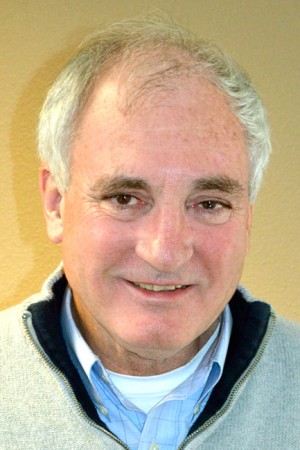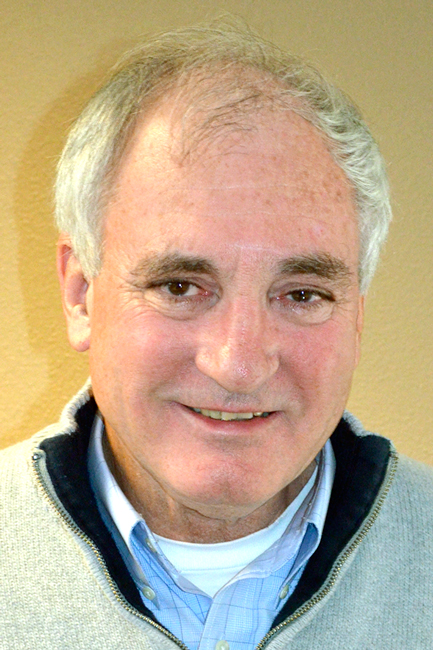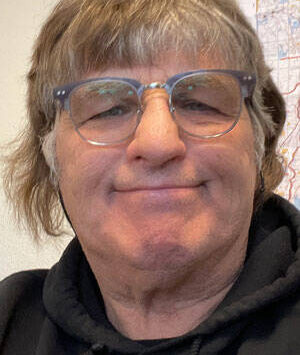“It is (Affordable Care Act) changing reimbursement structure through the state. More people are insured, but deductibles are higher,” Ron O’Halloran, Temporary Administrator, North Valley Hospital
O’Halloran discusses changes to healthcare in ACA
TONASKET – Clarice Nelson, reporting for the Long Range Focus committee at the April 9 North Valley Hospital Board of Commissioners meeting said five Skype interviews of hospital administrator candidates were scheduled for the end of March, but two of the candidates had taken other jobs already.
The first Skype interview was done last week, and two candidates were scheduled to be interviewed Tuesday, April 14. One of them was a “no-show” according to Nelson, and the other one is no longer in the running after being interviewed. An interview with a third candidate is intended to be set up for next week. The on-campus interviews have been postponed, and the linked-in ad for the new administrator will be expanded for another 30 days.
Meanwhile, Ron O’Halloran began serving as interim hospital administrator April 1, and is dedicated to holding the helm as long as necessary.


“I’ve had fun trying to meet the staff and greet the community as I go around,” O’Halloran said at the board meeting. “I’m pleased with staff and their commitment to the community, which takes us a long way to meet the goals of the strategic plan. While I am here, we will get out into the community. If you have a service organization and want us to come and talk, let us know.”
O’Halloran said it is important for people to understand what is going on with changes in healthcare through the Affordable Care Act/Obama Care.
“It is changing reimbursement structure through the state. More people are insured, but deductibles are higher,” O’Halloran said.
Board Chair Helen Casey reported that “The ICD10 (Insurance Diagnostic Codes manual) is coming and will change lives forever—how we bill, how we treat people. There’s an awful lot to go along with that in prep work. Doctors would like to be doctors and not have to deal with that.”
According to O’Halloran, the ICD regulates how doctors and nurses chart what they learn from the patient, how they envision care for the patient and how they carry that out.
“It’s all dictated and documented,” O’Halloran said, “acuity of care codes for service a patient receives. Each digit on the hand has a code and how it relates to the wrist, elbow and shoulder; it all has a code and that is how you get reimbursed.”
O’Halloran said there were thousands of codes, all related to the healthcare plan the physician has ordered, how it’s carried out, and how the patient responds. He said the ICD9 had been “out there for years, and they’ve added tens of thousands of more codes.”
“It’s shocking what has to be done to get reimbursed. If they don’t get every detail of care down, they don’t get a payment. If you use the wrong codes, there are penalties for that.”
O’Halloran said the coding was very difficult, particularly for older doctors who found it overwhelming.
“They are saying, ‘Just let me be a doctor.’ The younger ones do much better. Because of smart devices, if you follow the algorithms, codes come up automatically in place. Newer doctors are getting this as part of their training, whereas other ones have to pick it up,” said O’Halloran. “It’s all evolving.”
Casey asked staff to review the 2013/14 Strategic Plan to recognize goals met and others that still needed to be addressed.
“Some goals we can cross off and say ‘good job,’ others we still need to focus on,” Casey said, adding, “We haven’t done the education we need; we’ve been more reactive than proactive.”
According to O’Halloran, Casey was referring to staff time and energy being funneled into financial concerns.
“I think because of budget constraints they have been fighting through, they have forgone themselves the opportunity to go to classes sponsored by the hospital association, vendors and state agencies to keep themselves informed of the opportunity to affect positive change. It is important for board and staff to take advantage of continuing education,” said O’Halloran. “We need to put enough money into the budget so they can seek other certifications to improve their ability to come back and serve the community.”
As an example, O’Halloran said the hospital has a dietician who is not certified in diabetic education.
“We like to think we could help her achieve that,” said O’Halloran. “Sometimes an extra help can set someone up to achieve that extra level of ability to serve the community.”
NVH holds a Diabetes Support Group meeting the first Tuesday of every month in the hospital board room. The cost-free meeting, facilitated by R.N. Phil Gleason, runs from 5:30 to 7 p.m. and pre-registration is not necessary.
Quality reports from employees at each board meeting continued with Radiology Manager Shane Pyper reporting on imaging.
Pyper reported the new Optima 660 CT scanner was “doing great and the patients love it. We’ve done almost 500 scans this year so far, and this week we’ve already done 40 scans. It’s been a busy week.”
Pyper attributes steady business of the scanner to healthcare using “more diagnostic scans nowadays.” He said approximately 80 million scans were done in the United States in 2014, 1683 of those done at NVH.
With the increase in CT scans, several states have passed legislation requiring tracking of radiation doses per patient. Washington is not yet one of those states.
“We are now asking patients if they’ve had one done recently, and we pull up their records and track their dose,” Pyper said, adding that repeated CT scans happen for cancer or oncology patients, or patients who “don’t get the answer they want, so they go somewhere else and rescan.”
Pyper said another example might be someone with ongoing migraine headaches who comes in, and if they see a new doctor he might not know the patient just had a head scan done a couple weeks ago.
“A lot of patients don’t realize it (radiation) adds up over time,” Pyper said, adding that if Washington state passed legislation requiring radiation doses to be monitored, “Our scanner is set up and ready to go. It would just be a matter of implementing the tracking.”
The Optima 660 has Adaptive Statistical Iterative Reconstruction, ASIR, which allows lower dose scanning. The ASIR software corrects it to still have a high-quality image, according to Pyper.
“Our goal is to use up to 40% ASIR dose reduction,” Pyper said. The scanner is calibrated daily, and monitored yearly by a physicist.
“If the numbers started to stray, we would call in a service technician, and if they couldn’t fix it we would call in a physicist,” said Pyper.
Pyper said one year of natural radiation is about three millisieverts of radiation, and a chest Xray equaled about seven millisieverts. A CT scan is equal to about 200 chest Xrays, according to Pyper.
For Board Member Committee reports, Herb Wandler said his favorite item to comment on “is finance, as it keeps improving. When I look back at the Strategic Plan of 2013/14, we were not in good shape. We have made great progress,” said Wandler, adding that regarding Caribou Trail Orthopedics, Mid Valley Hospital was still struggling to pay their warrants.
NVH had $1,518,422 cash on hand as of April 9.
“It would be good to have 90 days cash on hand,” said Casey. “We’re not quite there, but we’ve done well.”
According to O’Halloran, the hospital is about a quarter of the way to having 90 days cash on hand.
Theresa Hughes said the Nursing Home Success Team put on a couple of good pubic forums, and would be looking at what to do next.
“They want to do another one of the forums here in Tonasket,” said O’Halloran. “We had a great turnout in Oroville and would like to see that happen here as well.”
Casey reported the hospital’s Wellness Programs have been well-received by the people participating in them. The next course will be Thursday, April 16 from 6:00 to 7:00 p.m. OT R/L John D. Ehlers will present a course on Occupational Therapy focusing on what a person can do to improve and extend functional safety and independence within their personal residence. The cost is free, but people are asked to register ahead of time.
“It is changing reimbursement structure through the state. More people are insured, but deductibles are higher,” O’Halloran said.“It is changing reimbursement structure through the state. More people are insured, but deductibles are higher,” O’Halloran said.




